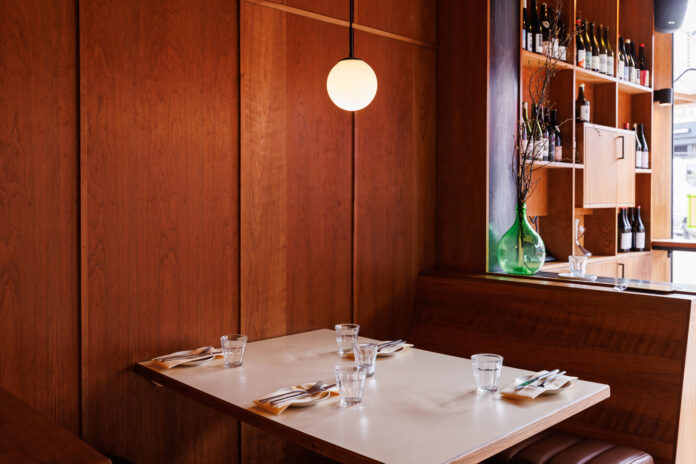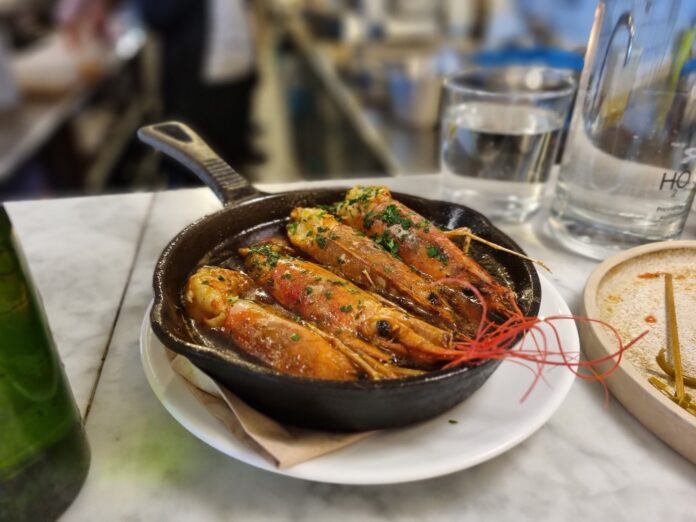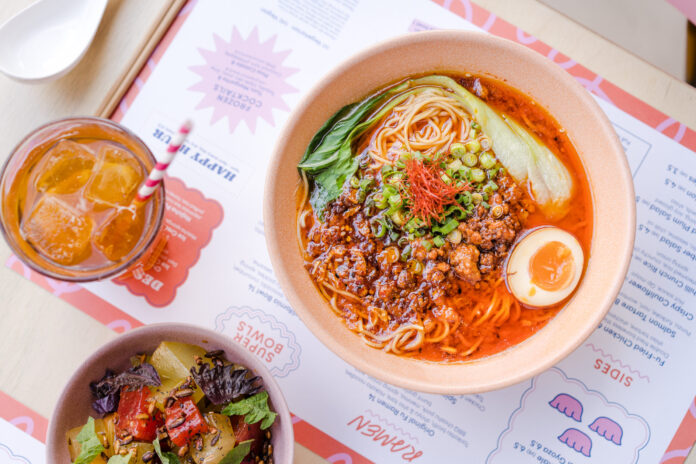And top tips on how to cook a beef roasting joint for your festive feast
Are you looking for an alternative to Turkey this Christmas? Chicken too pedestrian? Lamb a little too springtime? Your festive feast needn’t be mired in rhetorical questions…
Increasingly, discerning Brits are dispensing with the reliably dry, often wasteful turkey roast in favour of something different, and we’re very much here for it. And with the rumours going around that there will be a shortage of turkeys this year, we’re hedging our bets on beef.
A roast beef for Christmas is so much more than your average Sunday Lunch. Think mustard crusts and rich Madeira glazes, a deep, brooding gravy, and the best possible reason to crack out the horseradish…all there to turn your beef into a showstopper worthy of the Christmas table.
And let’s not forget an excuse to serve up your famous Yorkies; yep, we believe that Yorkshire puddings belong only with roast beef (don’t @us).
But the best thing about doing beef for Christmas (aside from the flavour of course), is that unlike a roast turkey, there’s no need for constant basting, prodding and probing, and hours on hours of cooking. If that beef roasting joint turns out pink in the middle and the juices don’t run clear, the family are actively cooing. If the same happens with your turkey, the family are going down with salmonella.
Yep, beef is a great festive alternative that is sadly so often overlooked by so many, believing their Christmas roast needs wings to really take off. Throw the rulebook out the window this year; with the help of experts from South Ormsby Estate who rear a herd of ethically farmed, grass-fed Lincoln Beef in the heart of the Lincolnshire Wolds, here’s why beef is the IDEAL choice for your Christmas dinner and some top tips on how to cook a beef roasting joint for your festive feast.
SOURCING YOUR BEEF
It’s simple; the better the quality of meat, the tastier the end result. This is particularly true of beef; cooking it perfectly is less in the hands of the cook (phew) and more down to everything that’s come before it.
The hard graft has already been done, on the farm and in the butchers, by people with expertise and experience. These guys care deeply about their product, not just the coin they’ll make. We’re sure you’ll agree that only the best cut of beef will do for Christmas; buy beef from your local supermarket and you may unwittingly compromise on both flavour and welfare.
You’ll want to choose a cut of beef ideally suited for roasting, which will depend on the amount of time and money you’ve got at your disposal. Whatever you go for, there needs to be a natural covering of fat and good marbling for maximum flavour. Roasting on the bone imparts even more, so for us, it has to be a rib of beef. The forerib, preferably dry aged, with the chine removed for easier carving, is ideal.
In terms of breed, Massingberd-Mundy Lincoln Red Beef from South Ormsby is a herd of pure, original Lincoln Red Cattle, one of the nation’s oldest and rarest breeds of beef cattle. It boasts a depth of flavour we’re particularly fond of on the Christmas dinner table.
But how to cook that beef perfectly? Here are some top tips on doing just that…
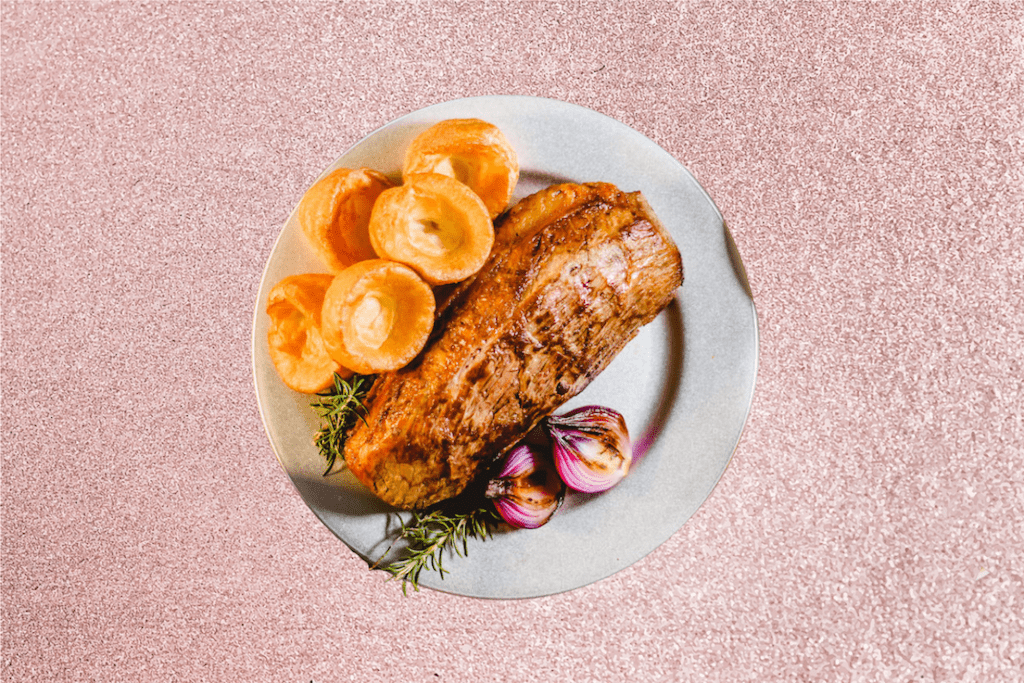
SALT IN ADVANCE
If you’re going to enjoy a roast beef that’s seasoned throughout rather than simply possessing a salty exterior, it’s a good idea to salt your roasting joint a little in advance of cooking it, allowing the seasoning to penetrate all the way to the middle.
A little dry brine the day before cooking (fine salt added on all sides) is fine. Then, rest your beef on a wire rack uncovered in the fridge until you cook it.
REMOVE YOUR BEEF FROM THE FRIDGE BEFOREHAND
For an even cook on your beef and to gain as much control of the cooking as possible, it’s a good idea to remove your beef joint from the fridge well in advance of roasting it; an hour, at the least, is appropriate here.
Allowing your meat to come up to room temperature prior to it hitting the oven means that the beef will cook more evenly, and provided you rest it thoroughly at the other end of the cooking process, will produce a more juicy end product, too. If you don’t do this, you run the risk of the outside of your beef burning before the middle has even warmed up.
Doing this simple task on the morning of Christmas Day could be what makes your beef taste that bit better.
BASTING STATIONS
Basting isn’t just for birds. Another great tip to use when cooking your beef this Christmas is to periodically take it out of the oven during the cooking process to baste it using any of the fat and meat juices that have rendered from the roasting joint. You could even supplement this with a little added beef dripping, if you like.
The best way to do this is to tilt the roasting tray (using oven globes) to allow all the juices and fat to pool in one corner. Then, with a ladle, collect that pooled fat and pour it back over the beef joint.
Fat is flavour, as they say, and by doing this you’ll not only keep the beef incredibly moist and tender, but you’ll add heaps of flavour, too.
INVEST IN A MEAT THERMOMETER
Investing in a meat thermometer might be the best decision you’ve ever made when cooking a Christmas roast beef.
Using a thermometer to cook your beef will allow you to make sure you are cooking the meat to perfection without drying it out. No one wants overcooked, grey beef, so when checking your beef, the recommended temperature is as follows:
- Rare beef – 50°C
- Medium rare – 55 °C
- medium – 60C °C
- well done – 70°C
Remember that any roast meat will continue cooking for a while after it’s left the oven, so to be on the safe side, remove your beef when the thermometer is a couple of degrees below those suggested temperatures.
Read: 8 IDEAL steps to the perfect steak
SLOW & STEADY WINS THE RACE
Cooking your meat slowly can really help to bring out all of the flavours in your beef, and minimises the worry of the meat drying out. Slowly cooking your meat, as opposed to cooking it at a higher temperature quickly, means that your beef will come out juicier and more tender.
We’re talking really low here, like 60°C for four to five hours which will get the centre temperature up to that 55°C medium rare in a patient, controlled manner.
Some cooks will also brown the exterior of the roasting joint in a searing hot pan prior to (or sometimes after) roasting it. This gives the beef that much coveted crust, and a delicious caramelisation that works so well as a contrast to the blushing meat inside.
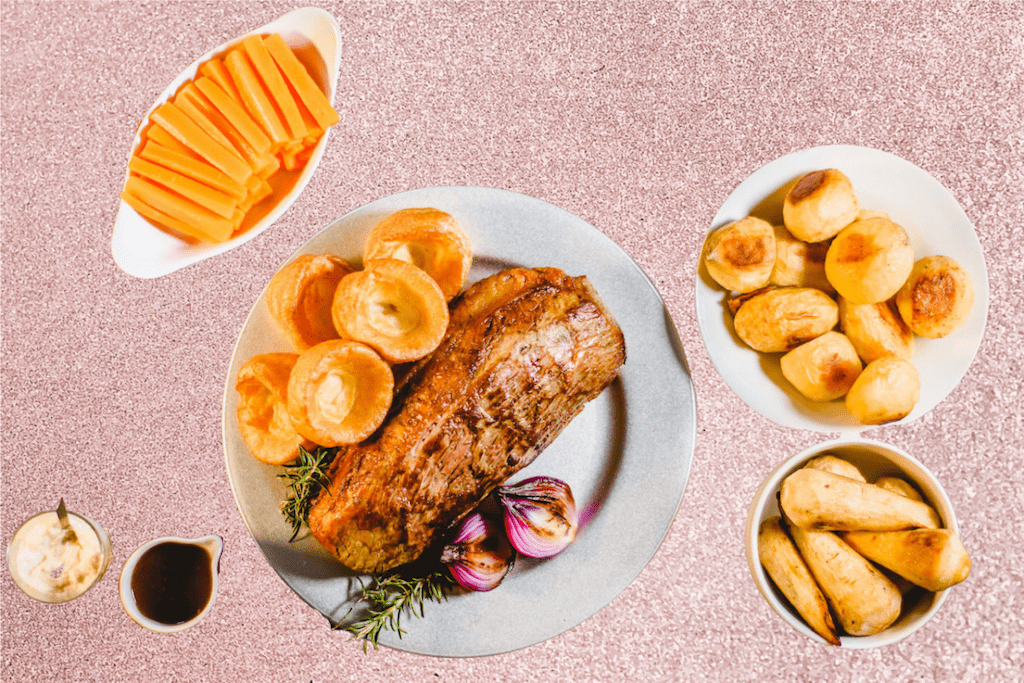
REST FOR THE WICKED
The biggest rookie error of all when serving up beef as a Christmas dinner centrepiece is to get over excited prematurely, and slice into that beef as soon as you’ve taken it out of the oven. Instead, you need to let it rest to ensure the meat juices redistribute and remain in the joint, rather than all over the chopping board.
Conventional wisdom suggests that you’ll want to let it relax for about as long as you cooked it for, though an hour or so should be fine if the aromas are too tantalising to resist. Just make sure you keep your resting beef covered with foil, so it remains warm.
Now, all you have to do is finish your gravy and pray those yorkies rise!
THE BOTTOM LINE
We hope that we’ve made your Christmas cooking experience that little bit easier and that this year, the whole family appreciates this delicious deviation from tradition. We should warn you, however, that you’ll now be cooking roast beef for the family on Christmas Day for eternity. Good luck!



